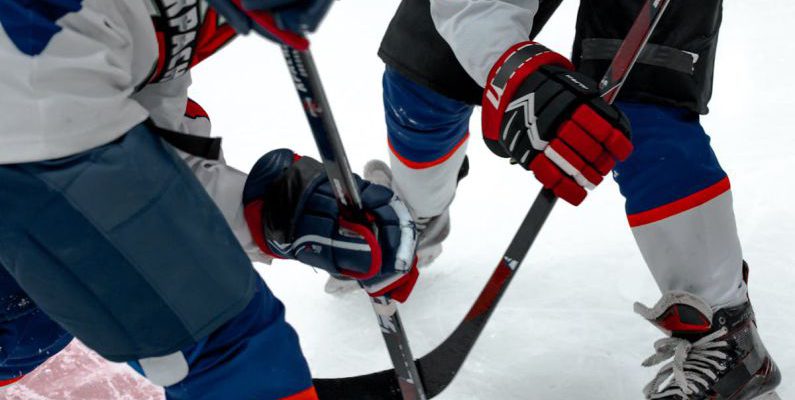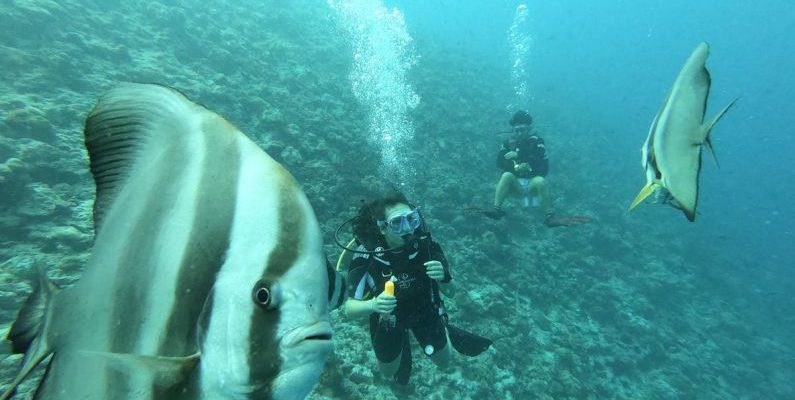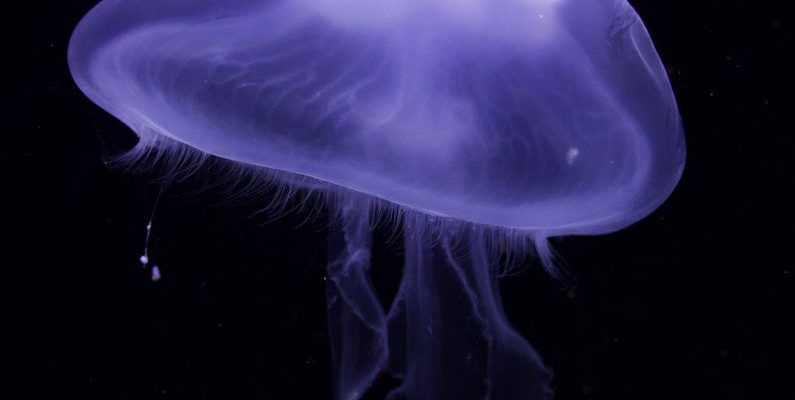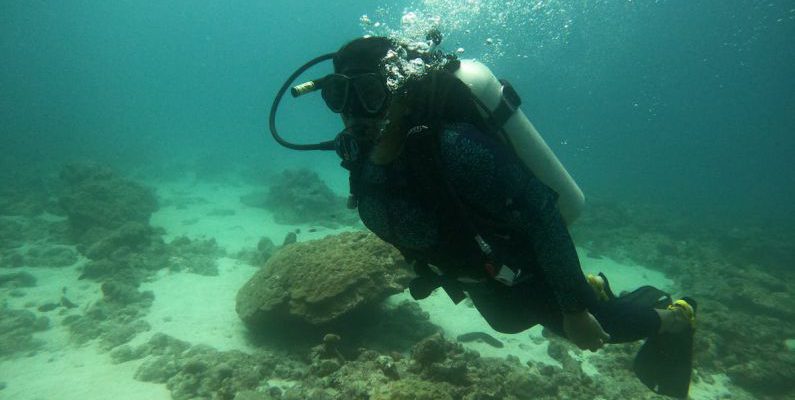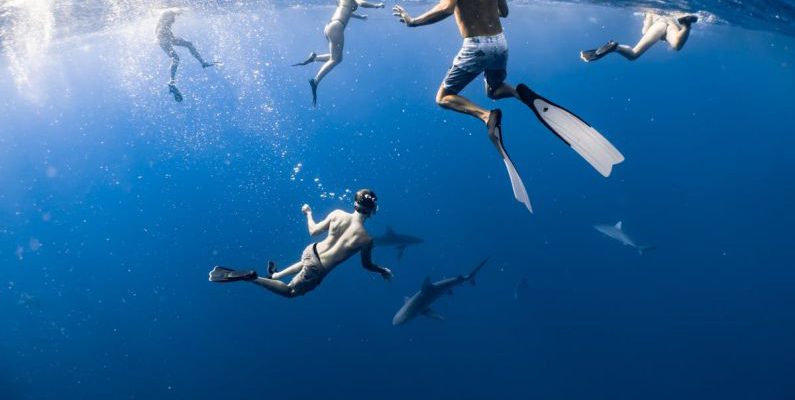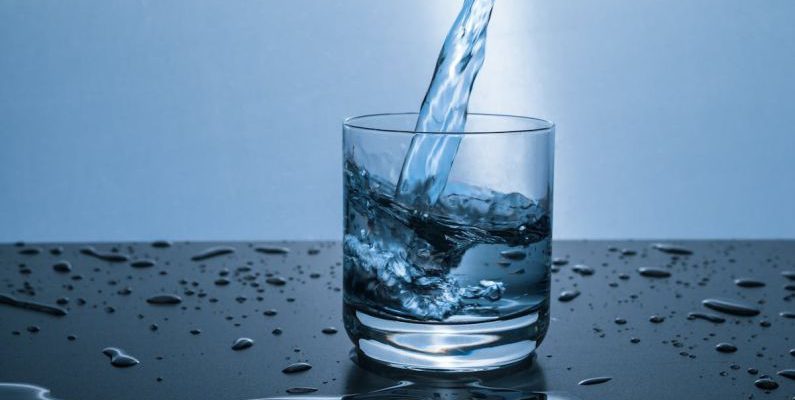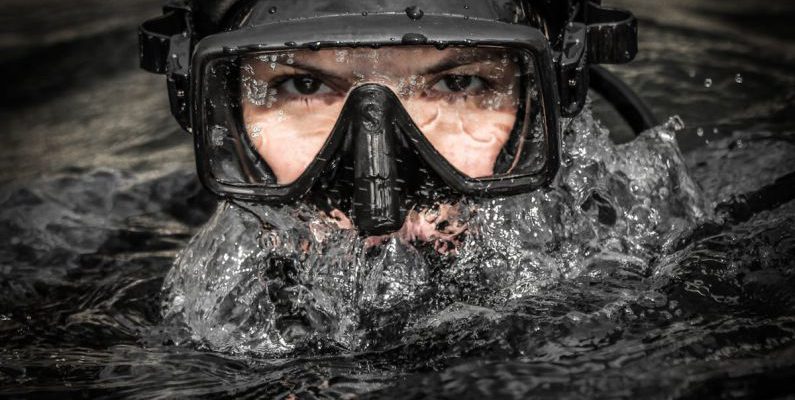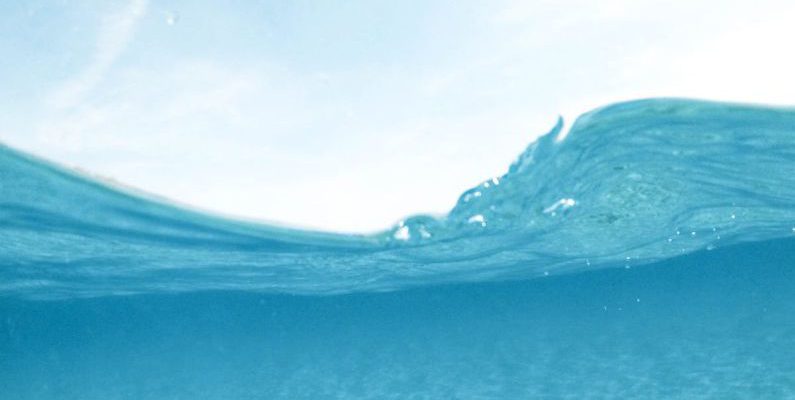Mares Puck Pro is a popular dive computer that has garnered attention from both beginner and experienced divers. With its sleek design, user-friendly interface, and advanced features, the Mares Puck Pro promises to enhance the diving experience for enthusiasts. However, with a plethora of dive computers available in the market, is the Mares Puck Pro truly worth the investment? In this review, we will delve into the key features of the Mares Puck Pro to determine if it lives up to the hype.
Author: diveholidayisle
The anticipation builds as the boat cuts through the crystal-clear waters of the South Pacific, headed towards the kingdom of Tonga. Known as the jewel of the South Pacific, this archipelago nation offers a unique opportunity to witness the majestic beauty of humpback whales in their natural habitat. Whale watching in Tonga is not just a tourist attraction; it is a transformative experience that leaves a lasting impact on all who have the privilege of encountering these gentle giants up close.
The Kingdom of Tonga: A Pristine Paradise
Tonga, a collection of 170 islands nestled between Fiji and Samoa, is a haven for nature lovers and adventure seekers alike. Its untouched landscapes, vibrant coral reefs, and warm hospitality make it a top destination for those seeking a truly authentic island experience. The waters surrounding Tonga serve as a sanctuary for humpback whales, who migrate here each year to mate, give birth, and nurse their young. This unique congregation of whales makes Tonga one of the best places in the world for whale watching.The Dance of the Humpback Whales
As the boat approaches the designated whale watching area, the air is filled with anticipation. Suddenly, a spout of water shoots into the air, followed by the majestic sight of a humpback whale breaching the surface. These gentle giants, known for their acrobatic displays, seem to perform a choreographed dance just for the lucky onlookers. From tail slaps to spy hops, each movement is a testament to the grace and power of these magnificent creatures.Getting Up Close and Personal
For those lucky enough to experience a close encounter with humpback whales in Tonga, the feeling is nothing short of awe-inspiring. The sheer size of these creatures, some measuring up to 50 feet in length and weighing as much as 40 tons, is enough to humble even the most seasoned traveler. Yet, despite their imposing size, humpback whales are known for their gentle nature and curious demeanor. It is not uncommon for these majestic creatures to approach boats, giving visitors a rare opportunity to witness them up close.Conservation and Protection Efforts
While whale watching in Tonga offers a once-in-a-lifetime experience, it is essential to remember the importance of responsible tourism. The government of Tonga, in collaboration with local conservation organizations, has implemented strict guidelines to ensure the protection of humpback whales and their habitat. By adhering to these guidelines, visitors can enjoy the beauty of these creatures without causing them harm or distress. Through education and awareness, we can all play a part in preserving the natural wonders of Tonga for future generations to enjoy.A Transformative Experience
Whale watching in Tonga is not just a sightseeing excursion; it is a transformative experience that leaves a lasting impact on those who have the privilege of witnessing it. The sheer beauty and power of humpback whales serve as a powerful reminder of the importance of conservation and preservation. As we navigate our way through the pristine waters of Tonga, surrounded by these gentle giants, we are reminded of our connection to the natural world and the responsibility we have to protect it.In the Presence of Greatness
As the sun sets on another day of whale watching in Tonga, the memories of our encounters with these gentle giants linger in our minds. The beauty and grace of humpback whales serve as a poignant reminder of the wonders of the natural world and the importance of preserving it for future generations. In the presence of these great creatures, we are humbled and inspired, knowing that our actions today can shape the future of our planet.
In Dive Sites
The Maldives, a tropical paradise nestled in the heart of the Indian Ocean, is renowned for its breathtaking natural beauty above and below the water's surface. With its crystal-clear turquoise waters, vibrant coral reefs, and an abundance of marine life, the Maldives offers an unparalleled underwater experience for divers and snorkelers alike. Exploring the stunning underwater world of the Maldives is an adventure like no other, where every dive or snorkel session unveils a mesmerizing display of colorful coral gardens, exotic fish species, and the possibility of encountering majestic marine creatures such as manta rays, whale sharks, and sea turtles.
**Diving into a Kaleidoscope of Colors**
Descending beneath the surface of the Maldivian waters is like entering a world painted in a kaleidoscope of vibrant colors. The coral reefs that fringe the islands are teeming with life, providing a stunning backdrop for divers and snorkelers to immerse themselves in. From intricate coral formations in hues of orange, pink, and purple to schools of tropical fish in every shade of the rainbow, the underwater landscapes of the Maldives offer a visual feast for the senses. Each dive site presents a unique tableau of marine life, ensuring that every exploration is filled with new discoveries and awe-inspiring moments.
**Encountering Majestic Marine Creatures**
One of the highlights of diving in the Maldives is the opportunity to encounter some of the ocean's most magnificent creatures up close. The Maldivian waters are home to a rich diversity of marine life, including gentle giants like manta rays and whale sharks. These graceful creatures can often be spotted gliding effortlessly through the water, their sheer size and beauty leaving divers and snorkelers in awe. Swimming alongside these majestic animals is a truly humbling experience, offering a rare glimpse into the wonders of the underwater world.
**Exploring Hidden Gems**
While the Maldives is known for its popular dive sites and marine hotspots, there are also plenty of hidden gems waiting to be discovered by adventurous divers. From secluded coral gardens teeming with tiny critters to underwater caves and swim-throughs shrouded in mystery, the Maldives offers a wealth of exploration opportunities for those willing to venture off the beaten path. Diving in these lesser-known spots can unveil a world of surprises, from rare species of fish to unique coral formations, making each dive an exciting and unforgettable experience.
**Preserving a Fragile Ecosystem**
As visitors to this underwater wonderland, it is essential to remember the importance of preserving the fragile marine ecosystem of the Maldives. Coral reefs, often referred to as the rainforests of the sea, play a crucial role in supporting marine life and maintaining the overall health of the ocean. Responsible diving practices, such as avoiding contact with coral, not feeding marine creatures, and properly disposing of waste, are essential to ensure the long-term sustainability of this precious ecosystem. By treading lightly and respecting the delicate balance of nature, we can help protect the underwater world of the Maldives for future generations to enjoy.
**Embracing the Magic of the Maldives**
In conclusion, experiencing the stunning underwater world of the Maldives is a journey that promises unparalleled beauty, excitement, and wonder. Whether you are a seasoned diver or a first-time snorkeler, the Maldives offers an immersive marine experience like no other. From vibrant coral reefs to encounters with majestic marine creatures, every moment spent exploring the underwater realms of the Maldives is sure to leave a lasting impression. So, pack your snorkel or scuba gear, dive into the crystal-clear waters, and prepare to be captivated by the magic that awaits beneath the surface of this tropical paradise.
In Gear Reviews
When it comes to scuba diving, having reliable and efficient equipment is crucial for a safe and enjoyable experience underwater. One essential piece of gear for divers is the regulator, which allows them to breathe comfortably while exploring the depths of the ocean. In this article, we will be taking an in-depth look at the Atomic Aquatics B2 Regulator, a top-of-the-line diving regulator known for its innovative design and high performance capabilities.
**The Atomic Aquatics B2 Regulator: A Game-Changer in Diving Technology**
The Atomic Aquatics B2 Regulator has been making waves in the diving community for its cutting-edge features and exceptional performance. Designed for both recreational and technical divers, this regulator is built to withstand the rigors of deep-sea exploration while providing smooth and effortless breathing throughout the dive.
**Innovative Materials and Construction**
One of the standout features of the Atomic Aquatics B2 Regulator is its construction using high-quality materials. The first stage of the regulator is made from solid titanium, known for its strength, durability, and corrosion resistance. This not only makes the regulator lightweight but also ensures that it can withstand the harsh conditions of saltwater environments without deteriorating over time.
**Comfort and Performance**
The second stage of the Atomic Aquatics B2 Regulator is where this device truly shines. Equipped with Atomic Aquatics' signature comfort swivel, the regulator allows for effortless movement and reduced jaw fatigue during extended dives. The inhalation effort of the regulator is adjustable, providing divers with the ability to customize their breathing experience to suit their individual preferences.
**User-Friendly Design**
Another aspect that sets the Atomic Aquatics B2 Regulator apart is its user-friendly design. The regulator is equipped with a user-adjustable breathing resistance knob, allowing divers to fine-tune their breathing effort on the go. The regulator is also equipped with a heat exchanger, which helps to prevent freezing in cold water conditions, ensuring consistent performance regardless of the environment.
**Overall Performance**
In terms of performance, the Atomic Aquatics B2 Regulator delivers exceptional results. Divers who have used this regulator praise its smooth and consistent airflow, making breathing underwater feel natural and effortless. The regulator is also known for its excellent work of preventing freeflows, providing divers with peace of mind during their dives.
**Final Verdict: Is the Atomic Aquatics B2 Regulator Worth It?**
For divers looking for a high-performance regulator that combines innovation, durability, and comfort, the Atomic Aquatics B2 Regulator is a top choice. Its use of high-quality materials, user-friendly design, and exceptional performance make it a standout option for both recreational and technical divers alike. While the price point of the regulator may be on the higher end, the investment is well worth it for divers who prioritize quality and reliability in their gear.
In conclusion, the Atomic Aquatics B2 Regulator is a game-changer in diving technology, setting a new standard for regulators in terms of performance and design. Whether you are a seasoned diver looking to upgrade your gear or a beginner seeking a reliable and efficient regulator for your underwater adventures, the Atomic Aquatics B2 Regulator is definitely worth considering.
In Gear Reviews
When it comes to scuba diving equipment, the importance of a reliable and high-quality buoyancy control device (BCD) cannot be overstated. The Aqualung Pro HD BCD is a popular choice among divers due to its robust construction and advanced features. But is it truly worth investing in? Let's delve into the details to help you make an informed decision.
**Aqua Lung Pro HD BCD: Overview**
The Aqua Lung Pro HD BCD is designed with the needs of both beginner and experienced divers in mind. Constructed from durable materials, this BCD offers excellent buoyancy control and comfort underwater. The jacket-style design provides stability and allows for easy adjustments to achieve the perfect fit.
**Key Features**
One of the standout features of the Aqua Lung Pro HD BCD is its integrated weight system. This system allows divers to easily release and secure weights without the need for additional weight belts. The BCD also features multiple D-rings and pockets for convenient storage of accessories and gear.
**Comfort and Fit**
Comfort is paramount when choosing a BCD, and the Aqua Lung Pro HD does not disappoint in this regard. The padded back and shoulder straps ensure that divers can wear the BCD for extended periods without discomfort. Additionally, the adjustable waistband and chest strap allow for a customized fit that enhances overall comfort and maneuverability underwater.
**Buoyancy Control**
Buoyancy control is crucial for a safe and enjoyable diving experience, and the Aqua Lung Pro HD BCD excels in this aspect. The BCD features a reliable inflator and deflator mechanism that allows divers to easily adjust their buoyancy levels with precision. Whether ascending, descending, or maintaining a specific depth, the Aqua Lung Pro HD offers responsive control for a seamless diving experience.
**Durability and Performance**
Durability is a key consideration when choosing any diving equipment, and the Aqua Lung Pro HD BCD is built to withstand the rigors of underwater exploration. The rugged construction and reinforced seams ensure that this BCD can handle the demands of regular diving without compromising performance. Whether diving in warm tropical waters or colder environments, the Aqua Lung Pro HD is a reliable companion.
**Is It Worth Investing In?**
Considering the advanced features, comfort, and durability offered by the Aqua Lung Pro HD BCD, investing in this piece of equipment is a wise decision for divers of all levels. The integrated weight system, excellent buoyancy control, and adjustable fit make it a versatile option that can adapt to various diving conditions and preferences.
**Final Thoughts**
In conclusion, the Aqua Lung Pro HD BCD is a top-tier choice for divers seeking a high-performance and reliable buoyancy control device. With its advanced features, durable construction, and comfortable design, this BCD offers excellent value for money and is a worthy investment for enhancing your diving experience. If you are looking for a BCD that delivers on performance and quality, the Aqua Lung Pro HD is definitely worth considering.
The call of the ocean has always been a powerful force in my life. From a young age, I found solace and excitement in the vast expanse of the sea. As I grew older, my fascination with the underwater world deepened, leading me to pursue a career as a rescue diver. This journey has been filled with challenges, triumphs, and moments of pure awe. In this article, I will share with you the incredible experiences and lessons I have learned as a rescue diver, diving into the heart of the sea.
Diving into the Unknown
The first time I descended into the depths of the ocean as a rescue diver, I felt a mix of exhilaration and trepidation. The vastness of the underwater world stretched out before me, a mysterious realm teeming with life and secrets. As I navigated through the currents and explored the coral reefs, I was struck by the sheer beauty and complexity of the marine ecosystem. Every dive was a new adventure, a chance to witness the wonders of the sea up close.The Call of Duty
Being a rescue diver is not just about exploring the ocean; it is also about being prepared to respond to emergencies and save lives. Whether it is assisting a distressed diver, rescuing a stranded marine animal, or participating in search and recovery missions, the role of a rescue diver is one of immense responsibility. Each dive is a reminder of the fragility of life and the importance of staying vigilant and focused in the face of danger.The Bond with Nature
One of the most profound aspects of being a rescue diver is the deep connection I have formed with the natural world. Through my dives, I have witnessed the intimate interactions between marine species, the delicate balance of the ecosystem, and the devastating impact of human activities on the ocean. These experiences have fueled my passion for conservation and inspired me to advocate for the protection of our seas. As a rescue diver, I have a unique perspective on the ocean and a duty to be its steward.Facing Challenges Head-On
Diving as a rescue diver is not without its challenges. From navigating strong currents to braving unpredictable weather conditions, every dive presents its own set of obstacles. However, it is in overcoming these challenges that I have grown both as a diver and as a person. The sense of accomplishment that comes from successfully completing a difficult rescue mission or mastering a new diving technique is unparalleled. Each challenge is an opportunity for growth and learning, pushing me to become a better diver and a more resilient individual.The Rewards of Rescue
Despite the challenges and risks involved, the rewards of being a rescue diver are immeasurable. The feeling of making a difference in someone's life, of being able to offer help and support in a time of need, is truly gratifying. Every rescue mission is a reminder of the power of compassion and the importance of community in times of crisis. As a rescue diver, I have had the privilege of witnessing the best of humanity in the face of adversity, and it is a gift that I will always cherish.A Call to Action
As I reflect on my journey as a rescue diver, I am reminded of the urgent need to protect our oceans and marine life. The sea is a fragile ecosystem that is under threat from pollution, overfishing, and climate change. It is up to each one of us to take action and be a voice for the ocean, to advocate for sustainable practices and conservation efforts that will ensure the health and vitality of our seas for generations to come. Let us dive into the heart of the sea, not just as rescue divers, but as guardians of this precious resource.In the Heart of the Sea: Embracing the Depths
My journey as a rescue diver has been a profound and transformative experience, shaping me in ways I never could have imagined. From the thrill of exploration to the challenges of rescue missions, every dive has been a lesson in courage, compassion, and connection. As I continue to dive into the heart of the sea, I carry with me a deep reverence for the ocean and a commitment to protect and preserve its wonders. Join me in embracing the depths, in exploring the unknown, and in being a force for good in the heart of the sea.
Diving is an exhilarating activity that allows individuals to explore the underwater world and experience the beauty of marine life up close. However, behind the thrill and adventure of diving lies a fascinating interplay of physics and physiology that govern the way our bodies interact with the underwater environment.
**Buoyancy and Archimedes' Principle**
One of the fundamental principles of physics that comes into play when diving is buoyancy. Buoyancy is the upward force exerted by a fluid that opposes the weight of an immersed object. When a diver enters the water, their body displaces an amount of water equal to their body's volume. According to Archimedes' Principle, the buoyant force acting on an object in a fluid is equal to the weight of the fluid displaced by the object. This principle explains why objects float or sink in water based on their density relative to the water.
**Pressure and Boyle's Law**
As a diver descends deeper into the water, the pressure exerted by the water increases. This is because the weight of the water above the diver creates pressure at greater depths. The increase in pressure affects the volume of air in the diver's lungs and other air spaces in the body. Boyle's Law states that the pressure of a gas is inversely proportional to its volume when the temperature is constant. Therefore, as the pressure increases with depth, the volume of air in the diver's lungs decreases. Divers must equalize this pressure by exhaling air from their lungs or using specialized equipment to prevent discomfort or injury.
**Gas Laws and Decompression Sickness**
The effects of pressure on the body become particularly crucial when considering the risks of decompression sickness, also known as "the bends." Decompression sickness occurs when dissolved gases, primarily nitrogen, come out of solution and form bubbles in the body tissues and bloodstream. This can happen if a diver ascends too quickly, causing a rapid decrease in pressure and inadequate time for the nitrogen to be safely eliminated from the body. Understanding the gas laws that govern the behavior of gases under pressure is essential for divers to plan their dives properly, ascend at a safe rate, and prevent decompression sickness.
**Respiration and Oxygen Toxicity**
Breathing compressed air while diving introduces another physiological consideration: oxygen toxicity. Oxygen toxicity can occur when a diver breathes high concentrations of oxygen at increased pressures, such as during deep dives or prolonged exposures to enriched air mixes. High levels of oxygen can lead to seizures and other life-threatening complications. Divers must be aware of their oxygen exposure limits and adhere to safe diving practices to minimize the risk of oxygen toxicity.
**Thermal Effects and Hypothermia**
In addition to pressure and gas considerations, divers must also contend with the thermal effects of water temperature. Water conducts heat more efficiently than air, making divers susceptible to hypothermia, especially in cold water environments. Hypothermia occurs when the body loses heat faster than it can produce it, leading to a dangerous drop in core body temperature. Proper thermal protection, such as wetsuits or drysuits, is essential for divers to regulate their body temperature and prevent hypothermia during prolonged dives.
**Adaptations and Training**
Despite the challenges posed by the physics and physiology of diving, the human body possesses remarkable capabilities to adapt to the underwater environment. Through specialized training and experience, divers can learn to manage their buoyancy, breathing, and other physiological responses to optimize their diving performance and safety. By understanding the principles that govern diving, divers can enhance their skills, explore the depths with confidence, and enjoy the wonders of the underwater world responsibly.
In conclusion, diving is a unique activity that blends the principles of physics and physiology in a dynamic underwater setting. By grasping the concepts of buoyancy, pressure, gas laws, and thermal effects, divers can navigate the underwater world with a deeper understanding of how their bodies interact with the aquatic environment. Through education, training, and adherence to safe diving practices, divers can embark on exciting underwater adventures while prioritizing their safety and well-being.
In Marine Life
When it comes to the ocean's most notorious predators, sharks often take the spotlight. These majestic creatures have long been the subject of fascination and fear, with many myths and misconceptions surrounding them. For those who dare to venture beneath the waves and encounter these creatures up close, separating fact from fiction is crucial. Let's delve into the world of diving with sharks to uncover the truths that lie beneath the surface.
The Reality of Shark Behavior
One of the most pervasive myths about sharks is that they are mindless killing machines constantly on the hunt for human prey. In reality, sharks are intelligent and curious animals with a complex range of behaviors. While it's true that some species of sharks can be dangerous to humans, the vast majority of shark encounters are non-threatening. Sharks are apex predators that play a crucial role in maintaining the health of ocean ecosystems, and most attacks on humans are cases of mistaken identity.Understanding Shark Attacks
Shark attacks, while rare, do happen. It's important to note that sharks don't view humans as their natural prey. In most cases, attacks occur when a shark mistakes a human for its usual prey, such as seals or sea lions. This is known as a "hit and run" attack, where the shark quickly realizes its mistake and moves on. The likelihood of a shark attacking a human is extremely low, and the vast majority of shark species pose no threat to swimmers or divers.Diving Safely with Sharks
For those interested in diving with sharks, safety should always be a top priority. While sharks are not the mindless killers they are often portrayed to be, it's essential to respect these animals and follow proper diving protocols. Dive operators who specialize in shark encounters are well-trained in shark behavior and know how to minimize risks during dives. By following their guidance and remaining calm and respectful in the water, divers can have unforgettable and safe encounters with these magnificent creatures.The Importance of Conservation
As apex predators, sharks play a vital role in maintaining the balance of ocean ecosystems. However, shark populations worldwide are facing significant threats from overfishing, habitat destruction, and bycatch. Conservation efforts are crucial to protect these animals and ensure their survival for future generations. By supporting shark conservation initiatives and advocating for sustainable fishing practices, divers can help protect these incredible creatures and the oceans they call home.Dispelling Myths and Fostering Understanding
Despite their fearsome reputation, sharks are not the bloodthirsty monsters they are often portrayed to be. By dispelling myths and fostering a deeper understanding of these animals, we can appreciate the beauty and importance of sharks in the marine environment. Diving with sharks offers a unique opportunity to witness these creatures in their natural habitat and gain a newfound respect for their role in the ocean ecosystem. Through education and responsible diving practices, we can ensure that sharks continue to thrive in the world's oceans.
Navigating underwater can be a thrilling yet challenging endeavor for divers of all levels. Perfecting your dive navigation skills is essential for a safe and enjoyable underwater experience. Whether you are exploring a new dive site or trying to find your way back to the boat, mastering navigation techniques is key. In this guide, we will explore the top tips and strategies to help you improve your dive navigation skills.
Understanding Underwater Navigation
Before diving into the specifics of navigation techniques, it is important to have a solid understanding of how underwater navigation works. Unlike on land, where you can rely on landmarks and signs, underwater navigation requires a different set of skills. Visibility can be limited, and natural currents can make it challenging to maintain a straight course. Understanding how to use a compass, natural cues, and your surroundings is crucial for successful navigation underwater.Utilizing a Dive Compass
A dive compass is a vital tool for any diver looking to improve their navigation skills. Familiarize yourself with how to properly use a compass before your dive. Ensure that your compass is in good working condition and that you know how to read it accurately underwater. Practice using your compass on land before attempting to navigate underwater. Remember that maintaining a level position is key to accurate compass readings.Natural Navigation Cues
In addition to using a dive compass, paying attention to natural navigation cues can help you orient yourself underwater. Look for features such as rock formations, coral reefs, and marine life that can serve as reference points during your dive. Remember that these cues can change depending on the current, so it is important to continually reassess your surroundings as you navigate. By combining your compass skills with natural navigation cues, you can improve your overall navigation accuracy.Practice Underwater Navigation
The old adage "practice makes perfect" holds true when it comes to improving your dive navigation skills. Take every opportunity to practice your navigation techniques during your dives. Start with simple navigation exercises in clear, calm waters before progressing to more challenging environments. Practice navigating using different methods, such as dead reckoning and reciprocal headings, to improve your overall proficiency. The more you practice, the more confident you will become in your ability to navigate underwater.Navigating Drift Dives
Drift dives present a unique set of challenges for divers, as the current can carry you along with little effort on your part. To navigate a drift dive successfully, it is essential to maintain situational awareness and constantly monitor your surroundings. Use your compass to determine your heading and adjust your position as needed to stay on course. Remember to communicate with your dive buddy and dive leader to ensure that everyone stays together during the dive.Emergency Navigation Techniques
In the event that you become disoriented or lose sight of your dive group, having emergency navigation techniques at your disposal is crucial. Practice using natural cues such as the sun's position or the direction of the current to help you find your way back to safety. Remember to remain calm and avoid making sudden movements that can further disorient you. If needed, deploy a surface marker buoy to signal your location to the dive boat or surface support.Mastering Underwater Mapping
Creating a mental map of the dive site can greatly enhance your navigation skills. Pay attention to key features such as entry and exit points, notable landmarks, and underwater terrain. By visualizing the dive site in your mind, you can better navigate your way through the underwater environment. Share your observations and insights with your dive buddies to improve the overall navigation experience for everyone.Enhancing Your Navigation Skills
Continuous learning and improvement are essential for mastering dive navigation skills. Take advanced navigation courses to further develop your skills and learn new techniques. Stay updated on the latest navigation tools and technologies that can aid you in your underwater adventures. Remember that navigation is a skill that requires practice and dedication to perfect, so keep honing your skills with each dive you undertake. In summary, perfecting your dive navigation skills is a rewarding journey that can enhance your overall diving experience. By understanding the fundamentals of underwater navigation, utilizing tools such as a dive compass, and practicing different navigation techniques, you can become a more confident and proficient navigator underwater. Remember to stay calm, aware, and prepared for any challenges that may arise during your dives. With dedication and practice, you can navigate the underwater world with ease and precision.
Exploring the underwater world as a diver can be an exhilarating and rewarding experience. However, it also comes with its own set of challenges and considerations, particularly when it comes to food and hydration. Proper nutrition and staying hydrated are crucial for divers to ensure their safety and well-being while underwater. In this article, we will delve into the important considerations divers need to keep in mind when it comes to food and hydration.
**Fueling Your Body for the Dive**
Before heading underwater, it is essential for divers to fuel their bodies with the right kind of food. Opting for a balanced meal that is rich in carbohydrates, proteins, and healthy fats can provide the necessary energy for a dive. Carbohydrates are particularly important as they are the body's primary source of fuel, providing the energy needed for physical exertion underwater. Foods such as whole grains, fruits, and vegetables are excellent sources of carbohydrates that can help sustain energy levels during a dive.
**Hydration is Key**
Staying hydrated is crucial for divers as dehydration can lead to fatigue, cramps, and impaired cognitive function. It is important to start hydrating well before the dive and continue to drink water throughout the day. Avoiding caffeinated and alcoholic beverages is recommended as they can contribute to dehydration. Opt for water or electrolyte-rich drinks to help replenish the fluids lost during the dive.
**The Impact of Dehydration Underwater**
Dehydration can have serious consequences for divers, affecting their performance and safety while underwater. Inadequate hydration can lead to an increased risk of decompression sickness, as well as impairing cognitive function and decision-making abilities. Dehydrated divers may also experience muscle cramps, dizziness, and fatigue, all of which can compromise their safety while exploring the depths.
**Nutrition on Dive Days**
On the day of a dive, it is important to pay close attention to what you eat to ensure optimal performance underwater. Avoid heavy or greasy meals that can cause discomfort while diving. Instead, opt for light, easily digestible foods such as fruits, vegetables, lean proteins, and whole grains. These foods can provide sustained energy without weighing you down or causing digestive issues during the dive.
**Snack Smart**
Bringing along nutritious snacks can be a great way to refuel during surface intervals or after a dive. Nuts, seeds, trail mix, and energy bars are convenient options that can provide a quick energy boost without taking up much space in your gear bag. It is essential to choose snacks that are high in nutrients and easy to digest to help replenish energy stores and keep you feeling alert and focused throughout the dive.
**Post-Dive Recovery**
After a dive, it is crucial to focus on replenishing fluids and nutrients lost during the underwater excursion. Rehydrating with water or sports drinks can help restore electrolyte balance and prevent dehydration. Consuming a balanced meal that includes a mix of carbohydrates and proteins can aid in muscle recovery and replenish energy stores. Additionally, incorporating foods rich in antioxidants, such as berries and leafy greens, can help reduce inflammation and promote overall recovery after a dive.
**Stay Safe and Dive Smart**
In conclusion, proper nutrition and hydration are essential components of safe and enjoyable diving experiences. By fueling your body with the right foods and staying hydrated before, during, and after dives, you can optimize your performance underwater and reduce the risk of potential health issues. Remember to listen to your body, stay hydrated, and make smart food choices to ensure a successful and rewarding diving adventure.
In Dive Sites
The Galapagos Islands, located in the Pacific Ocean off the coast of Ecuador, are renowned for their unique biodiversity and stunning landscapes. One of the most exhilarating ways to experience the wonders of this extraordinary archipelago is through scuba diving. The crystal-clear waters teeming with marine life offer divers an unforgettable experience unlike any other in the world.
